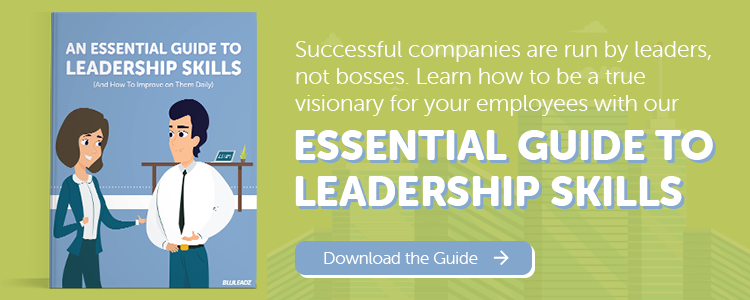Many companies now offer professional development programs for personnel who want to expand their horizons. In addition to providing great training, it helps pinpoint personnel who want to go the extra mile.
In marketing parlance, team members who choose to join a professional development program have turned into leads. When they follow through and take concrete steps toward bettering their skills as a result of that choice, you could call them internal customers.
And as with your marketing campaigns, you want as many qualified people as possible to participate.
So, what can you do to make it happen? Awareness is the key.
To actually use your program, employees:
- Must see what’s in it for them when they invest time and effort on the program’s goals.
- Must believe that they can readily use, access, and benefit from the program resources.
To get a head start on your goals, try these techniques:
1. Build a Profile of Your Audience

To craft your message and ensure it connects with the right people, start from the beginning. You should define which audiences your program will serve. Then, strive to understand what skills help those groups excel. You can shine a spotlight on their needs with your messaging.
Some potential audiences and some of the skills they value include:
- Executives: Strategic planning, goal setting, leadership, and change management.
- Managers: Team building, ethics, coaching and mentoring, and time management.
- Human Resources: Recruiting and hiring, conflict management, and compliance.
- IT Professionals: IT security, cloud computing, desktop and network management.
- Sales Professionals: Negotiation, presentations, prospecting, and lead management.
- Marketers: Marketing technology, social media, branding, and content marketing.
With all the information you have on each person’s job role and past performance, you have the tools for targeted messaging. Segmented messaging by area of specialization and seniority level will ensure each prospective program participant receives relevant communication.
2. Develop Your Program Goals in Detail
Aligning your program with your business goals is essential. What needs do you aim to meet for the enterprise as a whole? What challenges will exist in the mid-term and long-term future that you can prepare for today?
Based on that information, you can set the specific training goals you hope to achieve on a monthly and quarterly basis.
3. Target Specific Performance Metrics
Training doesn’t exist in a vacuum: It moves the needle on specific performance targets each individual wants to hit. Each audience has its own metrics – your customer service team may be focused on generating positive reviews, for example, while your sales team wants to close deals.
Long-term attainment of performance goals helps you link your program with its ROI. Promo materials for your professional development program should clearly reflect these goals and get each stakeholder excited about the possibility of accomplishing them.
4. Institute One-on-One Mentoring
Integrating a baseline level of professional development into each employee’s workplace life is a good way to stoke their enthusiasm for more.
One-on-one mentoring with senior team members strengthens both participants: The junior member can hone skills without reinventing the wheel, while the senior one can sharpen understanding of key topics by teaching others.
5. Provide Access to Offsite Training
Let’s face it: Sometimes, offsite training is more exciting than what you can offer on the job. There are terrific conferences, classes, and seminars going on all the time.

Adjust your training budget to connect people with outside opportunities. Internal incentives, such as a competitive approach to allocating funds, can help you optimize your budget.
6. Emphasize Actionable Feedback
In many enterprises, employee evaluations come around once or twice a year and are greeted with a shrug.
If you train managers to provide clear, actionable feedback, then employees will come to you equipped with the knowledge of where they could improve. That level of clarity will help them see the value of a professional development program for themselves.
7. Craft Ironclad Job Descriptions
Vague job descriptions have a domino effect on your entire HR organization, including that all-important interface where team members seek additional training.
When descriptions are vague (“other duties as assigned”), job postings attract underqualified or overqualified applicants. At the same time, current personnel don’t know what steps to take to move to the next level.
8. Create Career Development Plans
Advancing one’s skills is a long-term proposition. That requires vision and commitment on a long timeframe – and for most people, a formal plan is a must.
If your HR team is insightful about talent development, they can sit down with staff members and hammer out goals. With a plan in hand, most people are more inclined to proactively seek the training they need.
A well-plotted professional development program can be a competitive advantage. These eight tips will put you on the path to getting your team members invested and engaged.


Rob Steffens
I am the Director of Marketing here at Bluleadz. I'm a huge baseball fan (Go Yankees!). I love spending time with friends and getting some exercise on the Racquetball court.